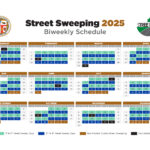The 162nd Avenue Safety and Access to Transit Project represents a significant investment in improving pedestrian, bicycle, and public transit infrastructure along 162nd Street in Portland, Oregon. Initiated in response to the introduction of TriMet’s Line 74 bus service in 2018, this project addresses critical safety and accessibility needs within the community.
Project Objectives and Background
The primary goals of the 162nd Street project are multifaceted, focusing on enhancing safety for all road users and improving access to public transportation. Specifically, the project aimed to:
- Improve Pedestrian Crossings: Create safer and more convenient pedestrian crossings, particularly near bus stops and key community areas.
- Increase Safety and Reduce Speeding: Implement street design modifications to mitigate illegal speeding and create a safer environment for pedestrians and cyclists.
- Enhance Bicycle Facilities: Upgrade and expand bicycle infrastructure to encourage cycling as a viable transportation option.
To achieve these objectives, the project implemented several key improvements along 162nd Street.
Key Improvements to 162nd Street
The 162nd Avenue Safety and Access to Transit Project brought about tangible changes to the streetscape, directly benefiting the community. These improvements include:
- New Pedestrian Crossings: Seven new pedestrian street crossings were constructed. Three of these specifically serve the new TriMet Line 74 bus stops, enhancing transit accessibility. The other four crossings improve pedestrian access to local amenities like shopping centers and schools, making 162nd Street safer for everyday activities.
Alt text: Project map of 162nd Street in Portland, Oregon, highlighting the areas of improvement for pedestrian and cyclist safety as part of the 162nd Avenue Safety and Access to Transit Project.
- Traffic Calming Measures: Vehicle travel lanes were reduced in strategic locations. This not only created space for the new pedestrian crossings but also serves as a traffic calming measure, discouraging speeding and making the street safer for all users.
- Sidewalk and Lighting Enhancements: Sidewalks were added where they were previously missing, ensuring continuous pedestrian pathways. New street lighting was installed at the new crossings, improving visibility and safety, especially during evening hours. Existing bike lanes also received enhancements, making cycling a more comfortable and safer option.
- Pavement Resurfacing: Recognizing the need for overall street maintenance, pavement paving was incorporated into the project in Fall 2020. SE 162nd Avenue, between SE Division Street and SE Powell Boulevard, was resurfaced, thanks to funding from the Fixing Our Streets gas tax. This pavement work contributes to a smoother and safer driving experience, complementing the pedestrian and cyclist focused improvements.
Alt text: Bike lane design plan for 162nd Street project in Portland, showcasing improvements for cyclist safety and accessibility along 162nd Avenue.
Project Funding
The 162nd Street Safety and Access to Transit Project was made possible through a combination of strategic funding sources, demonstrating a collaborative approach to infrastructure improvement. The project was funded by:
- $700,000 from TriMet Federal Transit Administration 5307 funds, highlighting the partnership with the regional transit agency.
- $1,000,000 from House Bill 2017 funds, indicating state-level investment in local transportation infrastructure.
- $4,300,000 from Fixing Our Streets, a local gas tax initiative dedicated to street maintenance and safety projects within Portland.
Conclusion
The 162nd Avenue Safety and Access to Transit Project is a successful example of how targeted infrastructure investments can create safer, more accessible, and more vibrant communities. By prioritizing pedestrian and cyclist safety, and enhancing access to public transit on 162nd Street, this project contributes to a more sustainable and livable Portland for all residents.


